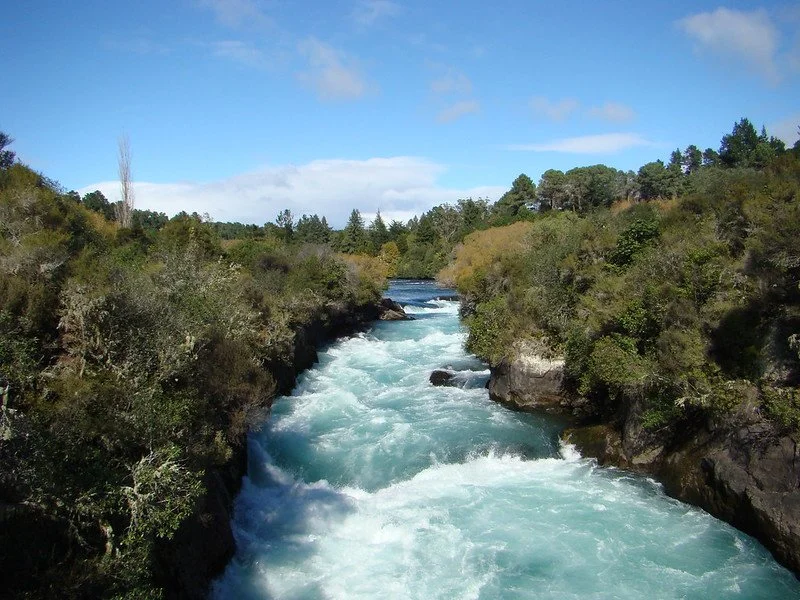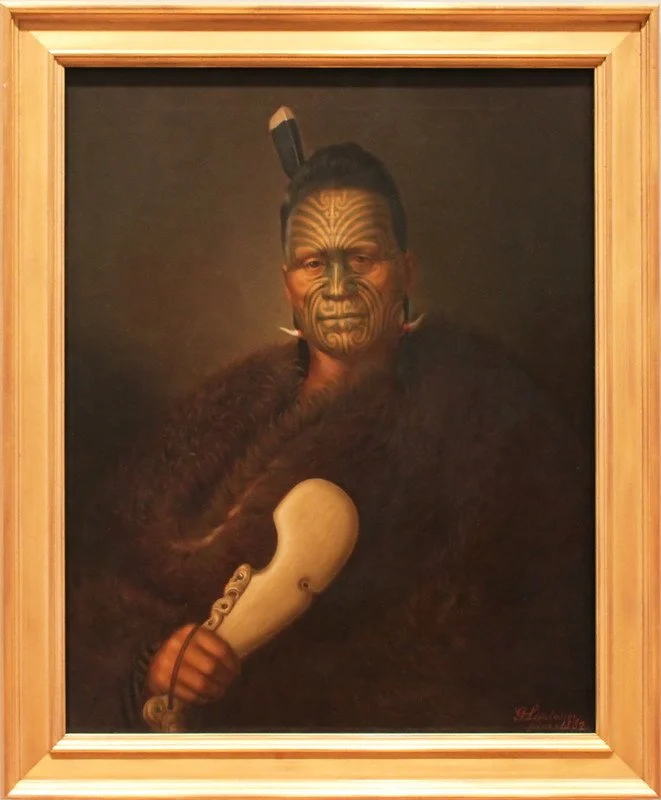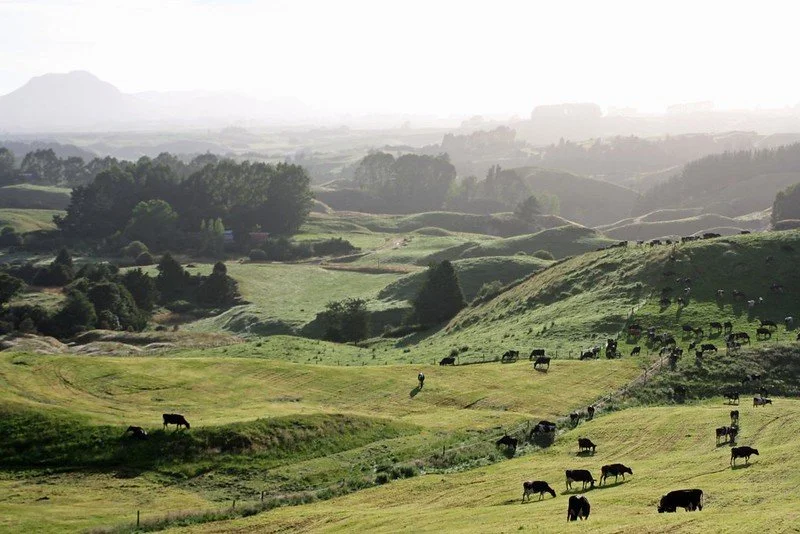introducing waikato
our waikato candles are inspired by new zealand's foremost dairy-farming region, although there's much more to the mighty waikato region than just cows and farms. home to hamilton, new zealand's fourth-largest city, and its namesake river, the waikato is known for diverse lands and turbulent history.
a section of rapids on the waikato river
photo by Ivan_sawam is licensed under CC BY-NC-ND 2.0
stretching from the coromandel peninsula, west of auckland, to the slopes of mount ruapehu, the waikato consists of valleys and coastal lands divided by numerous ranges of volcanic hills and has the waikato river - new zealand's longest river at 425 kilometres (264 miles) - carving its way across the region from its source near mount ruapehu, through lake taupō, and across the plains to its mouth at port waikato on the tasman sea.
the region was first settled by māori arriving on the tainui waka in the 13th century and was densely populated by the time europeans arrived in the early 19th century. as pākehā settlers made their way across the region the iwi of the region saw their lands, culture, and mana under threat and in 1858 elected pōtatau te wherowhero as the first māori king. this was the beginning of the kīngitanga movement which continues today under the auspices of the current kīngi, tūheitia pōtatau te wherowhero vii.
portrait of pōtatau te wherowhero by gottfried lindauer, 1882
photo by ahisgett is licensed under CC BY 2.0
the government of the time immediately viewed the kīngitanga movement as a threat and in 1863 invaded the waikato as punishment to the kīngi's followers and to seize their fertile lands. throughout the war māori fought back valiantly but were unable to stop the british advances, and within a year western and central waikato was in pākehā hands with many māori were exiled to lands in the south, known today as the king country.
the pākehā settlers set about raising cattle and sheep on the land which was viewed as ideal for farming: plenty of sunshine, rainfall across the year, and mild winters that allowed grass to grow almost all year round. many of the swamplands across the waikato were drained in the 1800s and into the 1900s, increasing the amount of land available for dairying, and today the region has more than a quarter of the country's dairy herd. as the 20th century began dispossessed māori began to return to their ancestral lands and, after a long struggle to correct the previous injustices, settled a waitangi tribunal claim with the government in 1995, which included an apology from the crown and financial compensation
cattle grazing on a farm at titiraupenga, north of taupō
photo by Alistair Smith is licensed under CC BY-NC-SA 2.0
it's not just cows and battles that the waikato is known for. the region has been home to some of the greatest sporting champions in new zealand history, and continues to be a centre for horse racing, rowing, motor sports, adventure sports, and - of course - rugby. the waikato is home to the chiefs, a professional rugby union team competing in the trans-tasman super rugby competition. as well as playing other teams in the competition the chiefs have battled international teams such as wales (winning 40-7 in 2016) and the british and irish lions (losing 34-6 in 2017), and one their first championship in 2012 followed by a second championship in 2013. whilst the team has had mixed success over the years their fans are some of the most loyal and fervent fans in the competition.




